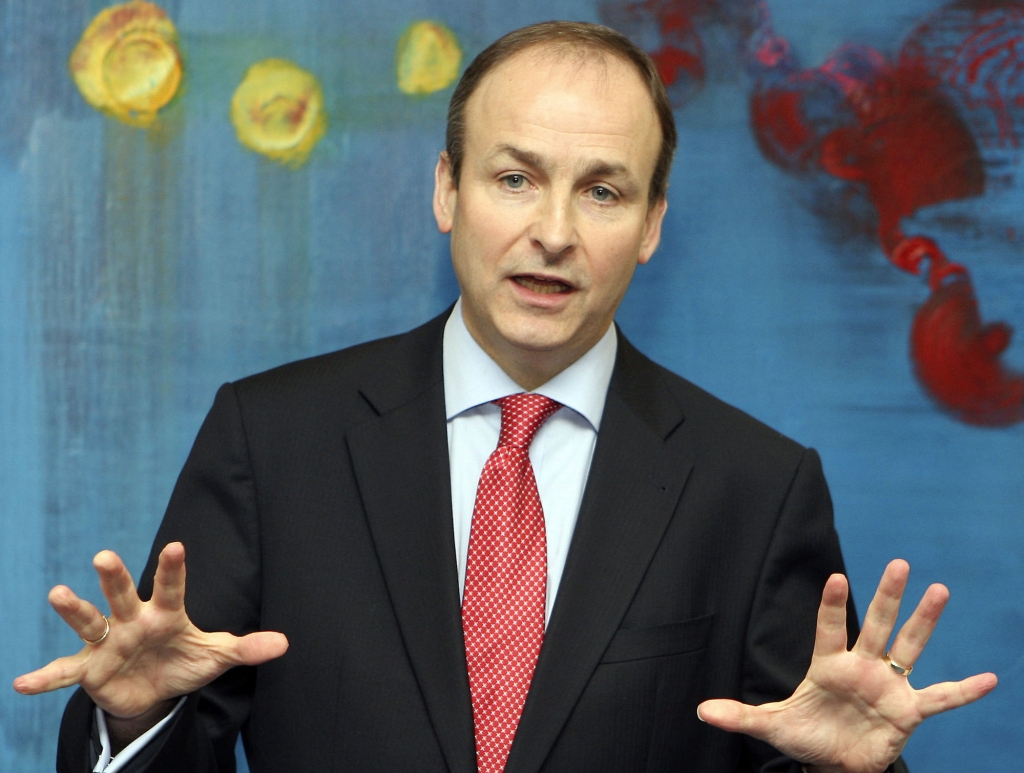-
Tips for becoming a good boxer - November 6, 2020
-
7 expert tips for making your hens night a memorable one - November 6, 2020
-
5 reasons to host your Christmas party on a cruise boat - November 6, 2020
-
What to do when you’re charged with a crime - November 6, 2020
-
Should you get one or multiple dogs? Here’s all you need to know - November 3, 2020
-
A Guide: How to Build Your Very Own Magic Mirror - February 14, 2019
-
Our Top Inspirational Baseball Stars - November 24, 2018
-
Five Tech Tools That Will Help You Turn Your Blog into a Business - November 24, 2018
-
How to Indulge on Vacation without Expanding Your Waist - November 9, 2018
-
5 Strategies for Businesses to Appeal to Today’s Increasingly Mobile-Crazed Customers - November 9, 2018
Irish PM faces unpalatable alliance as voters oust coalition
Irish Prime Minister Enda Kenny admits defeat in the general election.
Advertisement
Health Minister Leo Varadkar said he didn’t want Fine Gael to share power with Fianna Fail “just because the numbers add up”.
“As taoiseach and head of government, I have a duty and responsibility to work with the decision the people have made to provide the country with a stable government”, he said.
Mr Kenny, who had a 30-seat majority after the 2011 election, admitted the election result was disappointing.
Current coalition partner Labour was in line to win just 7 percent of the ballot, which spending minister Brendan Howlin said meant they were out of the equation for the next government.
“We’re committed to doing our best by the country and ensuring that the country gets a good government”, he said.
The Taoiseach has said it is still very early days in terms of deciding the make-up of the next Government.
In a trend that echoed elections in Greece, Spain and Portugal, voters turned to independent politicians, smaller parties and anti-austerity groups amid anger over hardship that has continued despite strong economic growth.
The new Irish parliament is scheduled to convene on March 10.
If the two traditional enemies cannot negotiate a pact, Fine Gael or Fianna Fail could seek support from a dizzying array of small parties and independents likely to be elected as results continue to trickle in.
Sinn Fein will become the the third largest party for the first time with an estimated 15 percent of the vote, a five percent increase from the last election.
Opinion polls have indicated that left-wing nationalists Sinn Fein may come close to doubling the 10 percent support they received in 2011, but the other major parties have ruled out joining them in government.
“So clearly the government of Fine Gael and Labour are not going to be returned to office”.
Ireland began voting early on Friday in the country’s General Election where recent polls suggest that the outcome could leave no party able to lead a stable coalition.
It was once seen as the political wing of the Irish Republican Army but has transformed itself into an anti-austerity force south of their power base in Northern Ireland.
Before the election Fianna Fail leader Micheál Martin ruled out any chance of forming a government with Fine Gael saying “It’s not a consideration”.
Most analysts forecast that Fine Gael would win around 50 seats, versus the 76 it won five years ago, while Fianna Fail should win more than 40, at least doubling its 2011 total of 20.
“Either we could have another election now and do away with the count, or we’ll let them muddle around for a month or so and maybe they can think the unthinkable”, said Michael Marsh, a professor of politics at Trinity College Dublin.
The party was formed in 1926 after a split in Sinn Fein.
Advertisement
The first official winners are expected to be declared Saturday afternoon.





























